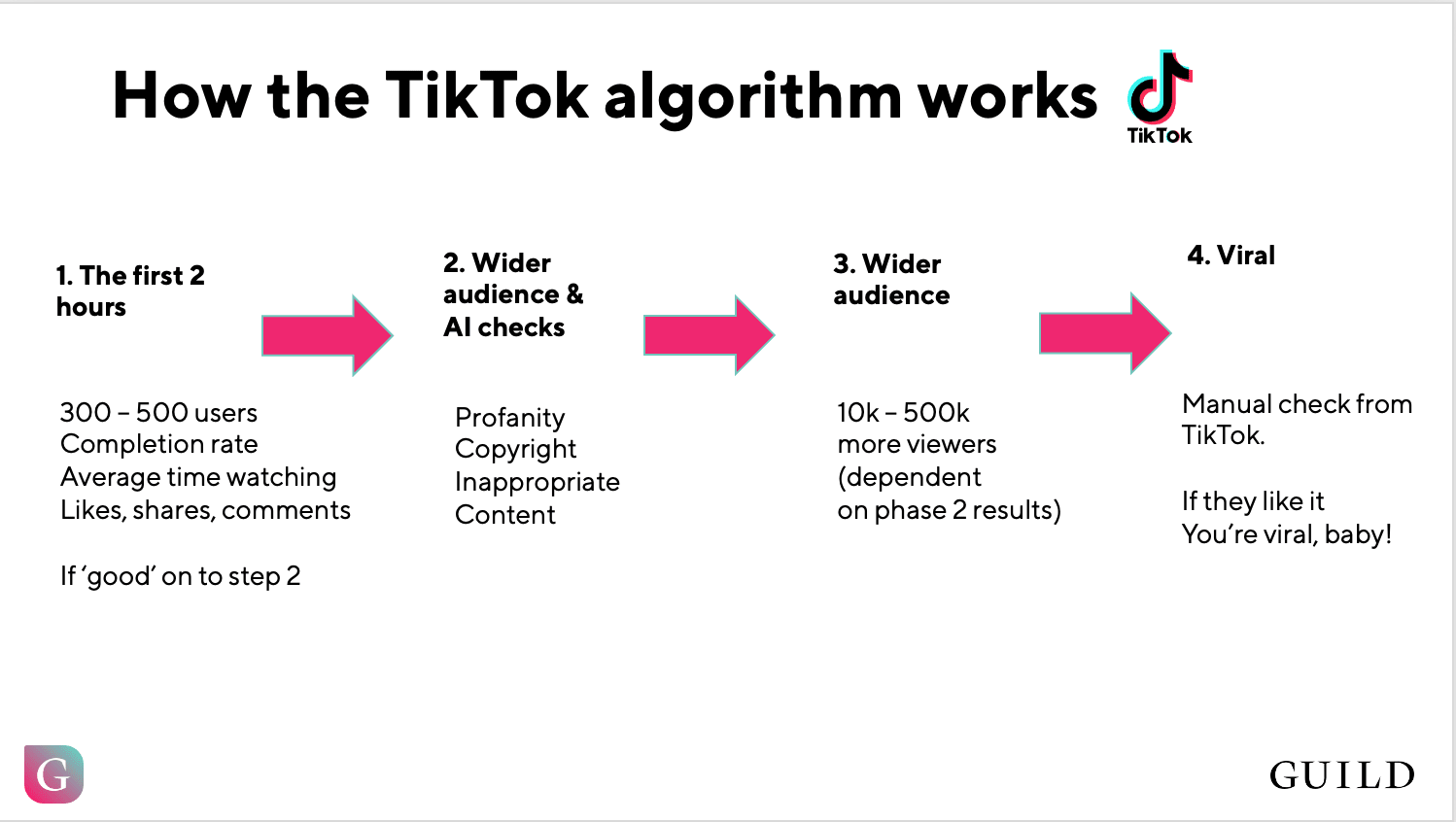Are you looking to boost your brand’s visibility and reach a wider audience? Look no further! “The Ultimate Guide to Influencer Marketing Strategy” is here to help you navigate the world of influencer marketing and create an effective strategy that will skyrocket your business. Whether you’re a small startup or an established company, this comprehensive guide will provide you with valuable insights and practical tips to collaborate with influencers, build authentic connections, and drive your brand’s success. Get ready to unlock the potential of influencer marketing and take your business to new heights!
The Ultimate Guide to Influencer Marketing Strategy
Influencer marketing has become an essential part of any comprehensive marketing strategy, providing brands with the opportunity to reach their target audience in an engaging and authentic way. However, in order to effectively leverage influencer marketing, it’s important to have a well-defined strategy in place. This guide will take you through the step-by-step process of creating an effective influencer marketing strategy, from defining your goals to staying compliant with legal and ethical standards.

1. Define Your Goals
Before embarking on an influencer marketing campaign, it’s important to clearly define your goals. This will help you determine the direction of your campaign and the metrics you should track to measure success.
1.1 Brand Awareness
Increasing brand awareness is often one of the primary goals of influencer marketing. By partnering with influencers who align with your brand values and have a wide reach, you can expose your brand to new audiences and increase your visibility in the market.
1.2 Increase Engagement
Engagement is a crucial metric for measuring the success of your influencer marketing efforts. By working with influencers who have a highly engaged audience, you can create content that encourages interaction and drives meaningful conversations around your brand.
1.3 Drive Sales
If your goal is to generate sales through influencer marketing, it’s important to focus on partnering with influencers who have a strong influence over their audience’s purchasing decisions. These influencers can effectively showcase your products or services and drive their followers to make a purchase.
1.4 Improve Brand Reputation
Influencer marketing can also be a powerful tool for improving your brand’s reputation. By partnering with influencers who are experts or thought leaders in your industry, you can leverage their expertise and credibility to enhance your brand perception and build trust with your target audience.
2. Identify Your Target Audience
To ensure that your influencer marketing efforts are effective, it’s crucial to identify and understand your target audience. This will help you find influencers who have the right reach and influence over your desired demographic.
2.1 Demographics
Start by defining the demographic characteristics of your target audience, such as age, gender, location, and income level. This information will help you determine the types of influencers who are most likely to resonate with your audience.
2.2 Psychographics
In addition to demographics, it’s important to consider the psychographic characteristics of your target audience. This includes their values, interests, attitudes, and lifestyle choices. Understanding these factors will enable you to find influencers who align with your audience on a deeper level and can effectively communicate your brand message.
2.3 Interests and Hobbies
Identifying the interests and hobbies of your target audience will further help you narrow down your search for the right influencers. Look for influencers who create content related to your audience’s interests, as this will ensure that their followers are likely to be interested in your brand as well.
2.4 Online Behavior
Finally, take into account the online behavior of your target audience. Determine which social media platforms they are most active on and how they interact with content. This will help you identify influencers who are popular on the platforms your audience uses and create content that aligns with their online behavior.
3. Find the Right Influencers
Once you have a clear understanding of your target audience, it’s time to start searching for influencers who can help you reach them effectively. There are different types of influencers to consider, each with their own advantages and disadvantages.
3.1 Micro-Influencers
Micro-influencers are individuals who have a smaller following but have a highly engaged and loyal audience. They often have a niche focus and can provide a more authentic and intimate connection with their followers. Partnering with micro-influencers can be a cost-effective way to reach a specific audience segment.
3.2 Macro-Influencers
Macro-influencers are typically individuals who have a large following, often in the hundreds of thousands or even millions. They have a broad reach and can help you increase brand awareness on a larger scale. However, partnering with macro-influencers may come at a higher cost and may result in less personal engagement with their followers.
3.3 Celebrity Influencers
Celebrity influencers are well-known individuals from the entertainment or sports industry who have a massive following. They can bring a high level of visibility to your brand and can be particularly effective for campaigns with a broad target audience. Keep in mind that partnering with celebrity influencers can be expensive and may not always result in the same level of authenticity as other types of influencers.
3.4 Niche Influencers
Niche influencers are individuals who have a focused following within a specific industry or interest area. They have built a reputation as experts or influencers within their niche and can provide valuable access to a highly targeted audience. Partnering with niche influencers can be a great way to reach a specific segment of your target audience with a tailored message.
4. Research and Analyze Influencers
Once you have identified potential influencers, it’s important to thoroughly research and analyze them to ensure they are the right fit for your brand and campaign goals. Pay attention to the following factors:
4.1 Reach and Engagement
Evaluate the reach and engagement of the influencers by looking at their follower count, average likes, comments, and shares per post. This will help you determine their potential to reach and engage your target audience effectively.
4.2 Authenticity and Relevance
Assess the authenticity and relevance of the influencers by reviewing their content and interactions with their audience. Look for genuine and meaningful connections with their followers, as well as alignment with your brand values and industry.
4.3 Audience Demographics
Examine the audience demographics of the influencers to ensure their followers match your ideal target audience. Consider factors such as age, location, and interests to determine if the influencer’s following aligns with your campaign objectives.
4.4 Content Quality
Evaluate the quality of the influencer’s content to ensure it aligns with your brand’s standards. Look for consistency, creativity, and professionalism in their posts, as well as their ability to effectively communicate your brand message.

5. Establish Partnership and Collaboration
Once you have selected the influencers you want to work with, it’s important to establish a strong partnership and collaboration to ensure the success of your influencer marketing campaign.
5.1 Compensation and Contracts
Discuss and agree on compensation and contract terms with the influencers. This can include financial remuneration, free products or services, or a combination of both. Clearly outline the deliverables, timelines, and expectations to avoid any misunderstandings.
5.2 Co-creation of Content
Involve the influencers in the content creation process by allowing them to provide input and ideas. This will help ensure that the content aligns with their style and resonates with their audience, resulting in more authentic and engaging content.
5.3 Customized Campaigns
Tailor your influencer campaigns to the specific strengths and interests of each influencer. This can involve creating unique content, offering exclusive discounts or promotions, or showcasing the influencer in a special way. Customized campaigns can help enhance the influencer’s connection with their audience and drive better results.
5.4 Exclusive Offers
Provide influencers with exclusive offers or access to your products or services. This not only incentivizes them to promote your brand but also gives their audience a unique opportunity to engage with your brand in a meaningful way.
6. Create a Compelling Influencer Brief
To ensure that your influencers have a clear understanding of your expectations and deliverables, it’s essential to create a compelling influencer brief.
6.1 Clear Objectives and Deliverables
Clearly outline your campaign objectives and what you expect the influencers to deliver. This can include the number of posts, desired engagement metrics, specific key messages or themes, and any other requirements or requests.
6.2 Brand Guidelines
Provide influencers with your brand guidelines to ensure that their content aligns with your brand’s visual identity, tone of voice, and values. This can include logo usage, color schemes, brand messaging, and any other elements that are important for maintaining brand consistency.
6.3 Content Guidelines
Give influencers guidance on the type of content you would like them to create. This can include suggestions for captions, hashtags, formats, and any other content specifications that will help ensure the content is on-brand and resonates with their audience.
6.4 FTC Guidelines
Ensure that the influencers are aware of and comply with the Federal Trade Commission (FTC) guidelines for disclosing sponsored content. This includes using clear and conspicuous disclosure language such as #ad or #sponsored to inform their audience that a post is part of a paid partnership.

7. Build Relationships and Nurture Connections
Building strong relationships with influencers is key to long-term success. Here are some strategies to help you build and nurture relationships with influencers:
7.1 Regular Communication
Stay in regular communication with influencers, providing updates, answering their questions, and keeping them informed about upcoming campaigns or collaborations. Building a relationship based on trust and open communication is crucial for effective collaboration.
7.2 Showing Appreciation
Express your appreciation for the influencers’ work by recognizing their efforts, sharing their content, and providing positive feedback. This will help foster a positive and supportive relationship.
7.3 Collaborative Feedback
Ask influencers for their feedback on campaigns, content, and overall collaboration. Their insights and suggestions can help you improve your influencer marketing strategy and strengthen your partnership.
7.4 Long-term Partnerships
Consider establishing long-term partnerships with influencers who have proven to be successful for your brand. This can lead to more authentic and impactful content, as well as a deeper understanding of your brand and audience.
8. Monitor and Measure Performance
To ensure the effectiveness of your influencer marketing strategy, it’s crucial to monitor and measure the performance of your campaigns.
8.1 Track Key Metrics
Identify key metrics that align with your campaign goals and track them consistently. This can include reach, engagement, click-through rates, website traffic, and conversions. Use analytics tools to gather data and assess the impact of your influencer marketing efforts.
8.2 Analyze Engagement and Reach
Evaluate the level of engagement and reach generated by each influencer and campaign. Consider factors such as likes, comments, shares, and impressions to determine which influencers are driving the most meaningful interactions with their audience.
8.3 Monitor Sales and Conversions
Measure the impact of your influencer marketing efforts on sales and conversions. This can involve using unique discount codes or tracking links to attribute purchases directly to influencer campaigns.
8.4 Sentiment Analysis
Analyze the sentiment surrounding your brand and influencer campaigns by monitoring mentions and conversations on social media. This will provide valuable insights into the overall perception of your brand and the effectiveness of your influencer partnerships.
9. Optimize and Adapt Your Strategy
Influencer marketing is an ever-evolving landscape, and it’s important to continuously optimize and adapt your strategy based on data and insights.
9.1 A/B Testing
Experiment with different approaches and elements of your influencer marketing campaigns by conducting A/B tests. This can involve testing different creative formats, messaging, or influencers to determine what resonates best with your audience.
9.2 Learning from Data
Analyze the data and insights gathered from your influencer campaigns to identify patterns and trends. Use this information to inform future strategies and make data-driven decisions.
9.3 Audience Feedback
Listen to your audience by monitoring their feedback and sentiments about your influencer campaigns. This can provide valuable insights into their preferences, interests, and expectations, enabling you to tailor your strategy accordingly.
9.4 Staying Up-to-date
Stay informed about the latest trends and developments in influencer marketing. Social media platforms and influencer landscape are constantly evolving, and staying up-to-date will ensure that your strategy remains fresh and relevant.
10. Stay Compliant with Legal and Ethical Standards
Compliance with legal and ethical standards is essential in influencer marketing. Failure to adhere to these standards can not only result in legal and reputational consequences but also undermine the trust and credibility of your brand.
10.1 Disclosure and Transparency
Ensure that influencers clearly disclose their partnerships with your brand in accordance with FTC guidelines. Transparent and honest communication is crucial for maintaining the trust of your audience.
10.2 The FTC Guidelines
Be familiar with the Federal Trade Commission (FTC) guidelines for influencer marketing and educate your influencers about their obligations. This includes disclosing any financial or material connections to your brand in a clear and conspicuous manner.
10.3 GDPR and Privacy Regulations
Respect and comply with applicable data protection and privacy regulations, such as the General Data Protection Regulation (GDPR) in the European Union. Safeguarding the privacy and personal information of your audience is essential for maintaining their trust.
10.4 Ethical Influencer Partnerships
Ensure that your influencer partnerships align with ethical principles and values. Choose influencers who share your brand’s commitment to integrity, diversity, inclusivity, and social responsibility.
In conclusion, influencer marketing can be a highly effective strategy for brands looking to reach and engage their target audience. By following these steps and taking a comprehensive approach, you can create a successful influencer marketing strategy that drives brand awareness, increases engagement, drives sales, and enhances your brand reputation. Remember to always stay compliant with legal and ethical standards and adapt your strategy based on data and insights to ensure long-term success.













![6 Steps to Create an Outstanding Marketing Plan [Free Templates] 6-steps-to-create-an-outstanding-marketing-plan-[free-templates]](https://socialmediamarketingtechniques.com/wp-content/uploads/2024/07/512-6-steps-to-create-an-outstanding-marketing-plan-free-templates-100x75.webp)

